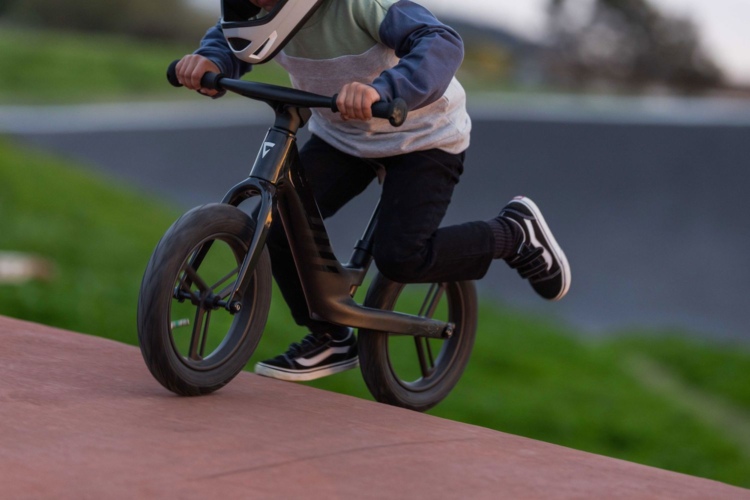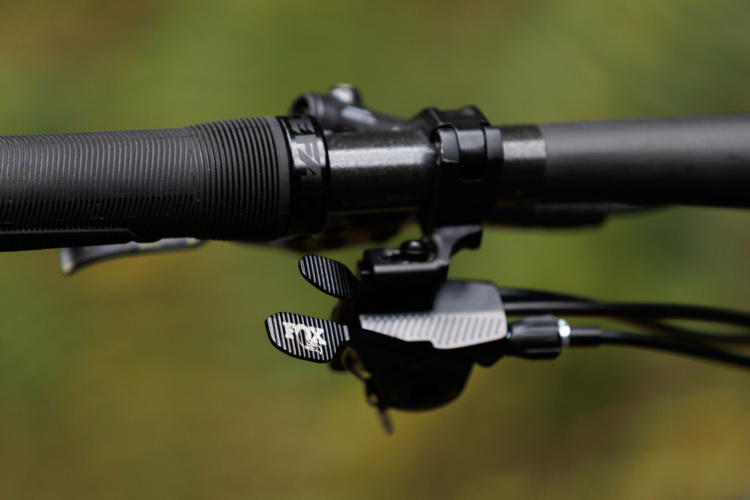
Like derailleur hangers and axles, mountain bike stems are a vital component that we tend to forget about. If they hold the handlebar at a comfortable angle, distance, and height we don’t often give them much additional thought. Thankfully the engineers who spend years designing them already did all of that thinking.
Neil Shirley from ENVE sums up their latest Alloy Mountain Stem succinctly. “The alloy stem is the result of a long line of stem prototypes and concepts. While fairly simple in theory, a stem is a surprisingly complex component given all that is asked of it. The best stems disappear into the bike and the rider forgets it is even there, but at the same time it needs to be beautiful in a way that compliments but does not detract [from] the bike’s aesthetics.”
The new Enve alloy stem came out in 2020, and we have been testing a 31.8 x 50mm size with their M5 Mountain Handlebar for the last few months. At $140, and paired with the $190 M5 bars, this cockpit costs a skosh more than the brand’s $300 carbon stem does alone. The stem can be ordered with a 31.8 or 35mm clamp in 35, 50, and 65mm lengths, all with 0° of rise. Our test stem weighs very close to the reported 139g, and the M5 bar is a hare’s hair from the reported 192g.
ENVE Alloy Mountain stem
- Price: $140
- Buy from ENVE
This cute little bar clamper uses 4mm stainless steel hex fasteners to tighten on the steerer tube and bar, and there’s a no-gap marking at the upper edge so folks only have to focus on torque specs for the two lower bolts. The gapless upper faceplate connection also adds to the stem’s aesthetic appeal, with no split in the logo from the rider’s view.

I thought the stem had a bit of Ford Fairlane styling, but Shirley countered with “more 1960 Vette. But not really, we wanted there to be some texture to the design and we wanted to highlight that the stem is alloy to further differentiate it from our carbon offering.”
In terms of stack height and faceplate width, the alloy handlebar holster has plenty of purchase to keep the bars perpendicular to the front wheel and quiet under the extreme trail torque it endures. Knowing that ENVE had put considerable time into developing the new alloy stem, I asked Shirley how they make decisions regarding stack height.
“The primary reasoning behind the stack height is to spread forces across more area of the steerer tube. Too short and you put a lot more force on the steerer and stem which will not fatigue as well, or at worst, you could risk damaging the steerer.”
We also tugged on Shirley’s shirt about where the sturdy stem is made. “The alloy mountain stem is made in Taiwan. The question always comes up. ‘Why don’t you make it in Ogden?’ The answer is simply that we don’t have the bandwidth to produce these stems in the quantities we need.” Given the lead times of most components today, brands are doing everything they can to increase availability.
The Alloy Mountain Stem has disappeared into my bike, just as Shirley suggested, and its tough build should help it last through several bike builds. I for one am stoked to see simple and lightweight stems on the market that don’t come in a million funky rise iterations. Thanks to longer reach measurements and modern frames with proper stack-heights we no longer need all those messy cockpit “fixes.”
While $140 isn’t cheap for an alloy stem, this is a well-made component that will stick around as long as the Allen wrenches that tighten its bolts, so buying the one you really like may be worth a little extra cash.

ENVE M5 handlebar
- Price: $190
- Buy from ENVE
On to the ENVE M5 Mountain Handlebar. Well, you might already be familiar with this one. The weight-conscious carbon stick only comes in a 31.8mm clamp diameter at a 760mm width that can be chopped as narrow as 720mm for riders with narrower shoulders or trails. It can be mounted with a 5mm rise or flipped for a more XC-aggressive 5mm drop, and the bar has had the same 9° rearward sweep since its birthday. When asked about testing back sweep Shirley replied, “we have tried a few but nothing that has unseated the original 9° sweep.”
A primary concern with carbon bars is that riders can over-torque the bolts and crush the tube. Shirley says the brand has addressed the clamping areas directly during the design and manufacturing process. “ENVE mountain bars [are made of] fairly complex laminates that consider everything from where the clamp zones are to the damping qualities. The goal is a refined ride experience for the user-defined by best-in-class ride feel and reliability.”
M5 bars have a little anti-slip coating at the stem clamp, and they are otherwise clean and free of markings apart from the logos. They come with a set of stickers in five different colors to make the logos match the colorway of your bike.
I left the M5 bars at full length, and the 760mm feels adequate for the style of riding these bars are designed around. At 444mm, my test bike’s reach is drastically longer than any other short-travel or rigid hardtail I have built prior, though it’s 1-3cm shorter than any of my long-travel rides. The 50mm stem paired with a slightly narrower handlebar feels like the ideal match for this frame. The narrower bar makes it easy to dip the bike into turns without fully extending my inside elbow and consequently losing agility.
I have some cranky wrists, but they haven’t voiced any complaints about the bar’s 9° sweep. When I grow tired on a ride the bar can feel overly straight, which is a good reminder to check my posture, flatten my back, and bend my elbows deeper. When I’m riding consciously, holding an aggressive position, this bar feels great to guide the bike where I like.





















0 Comments